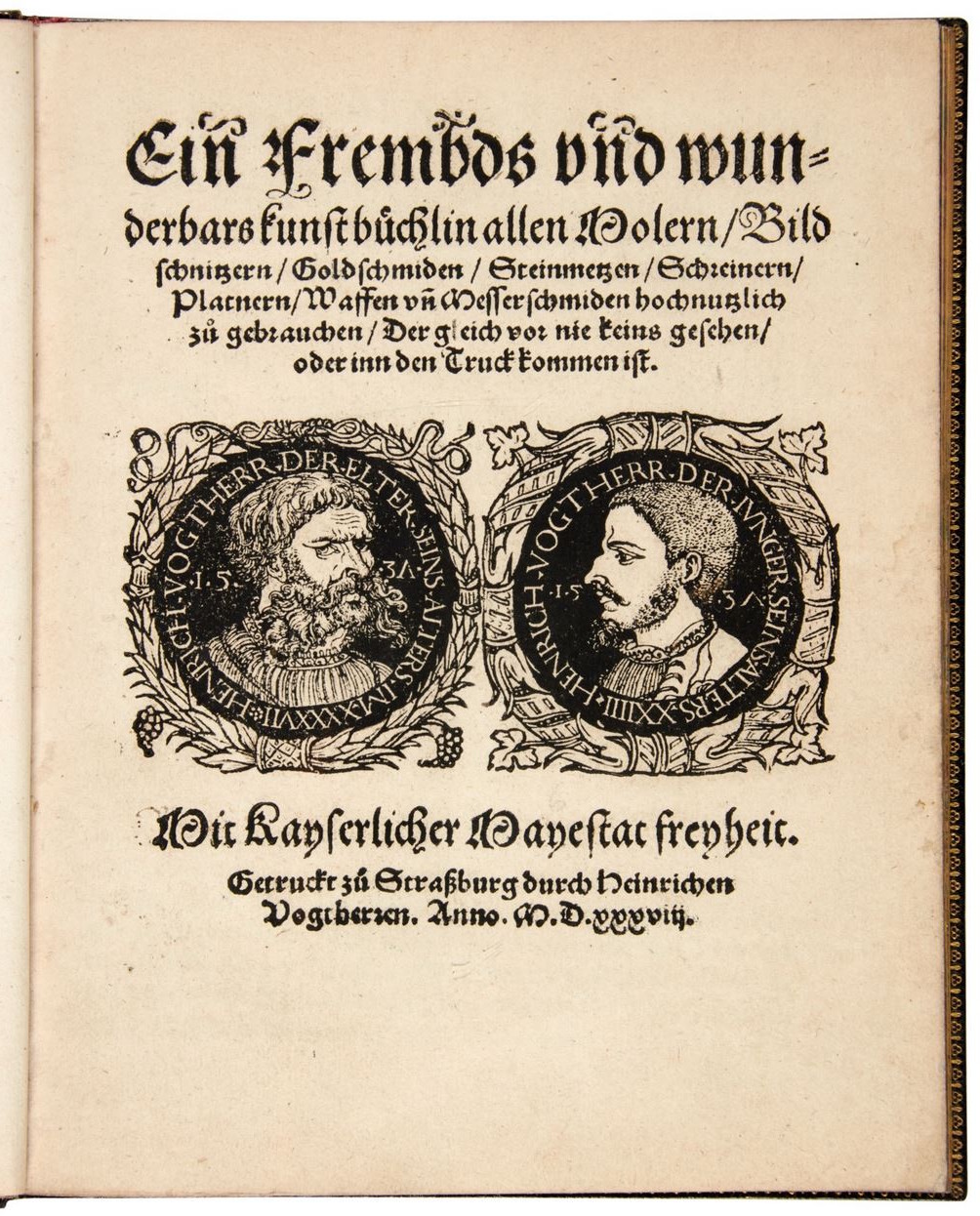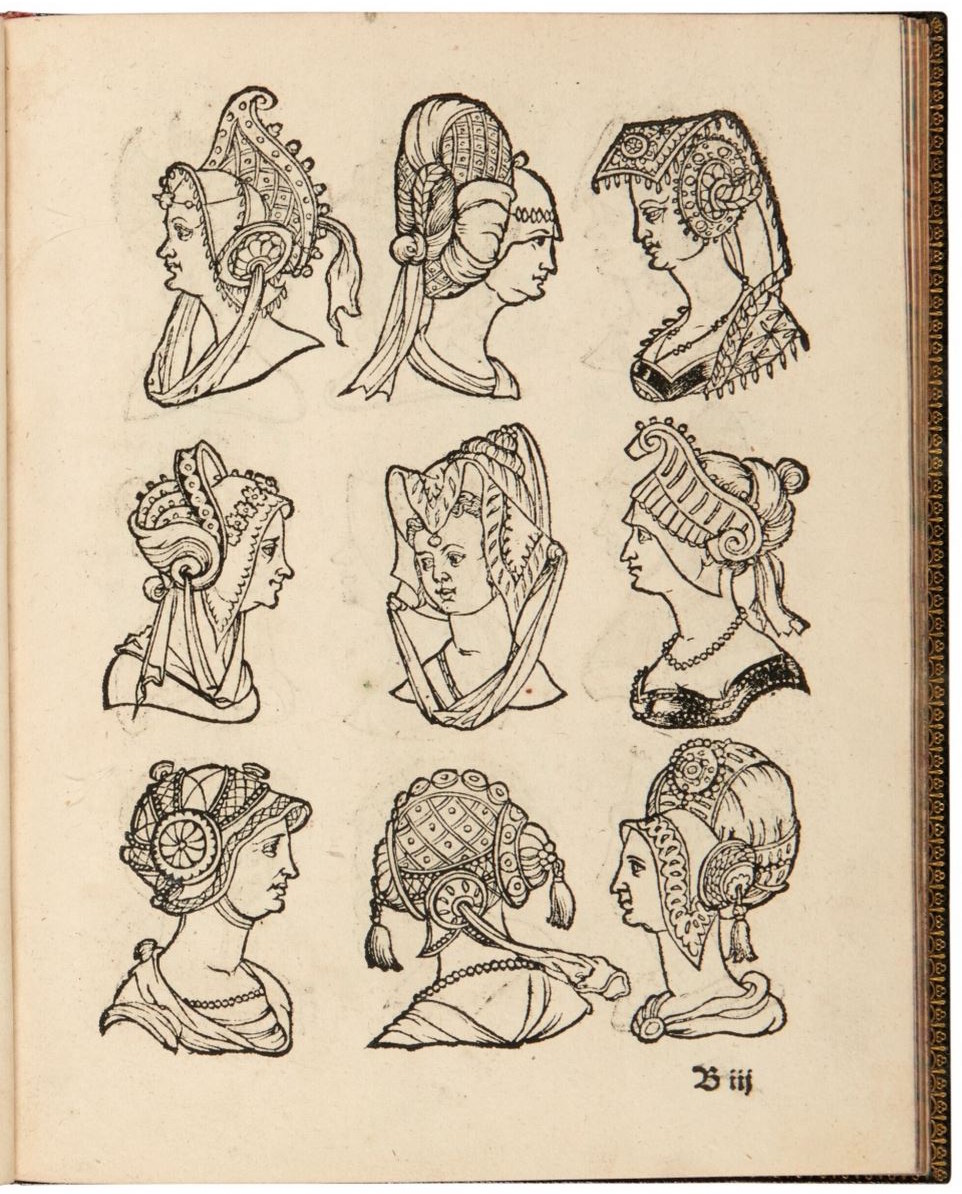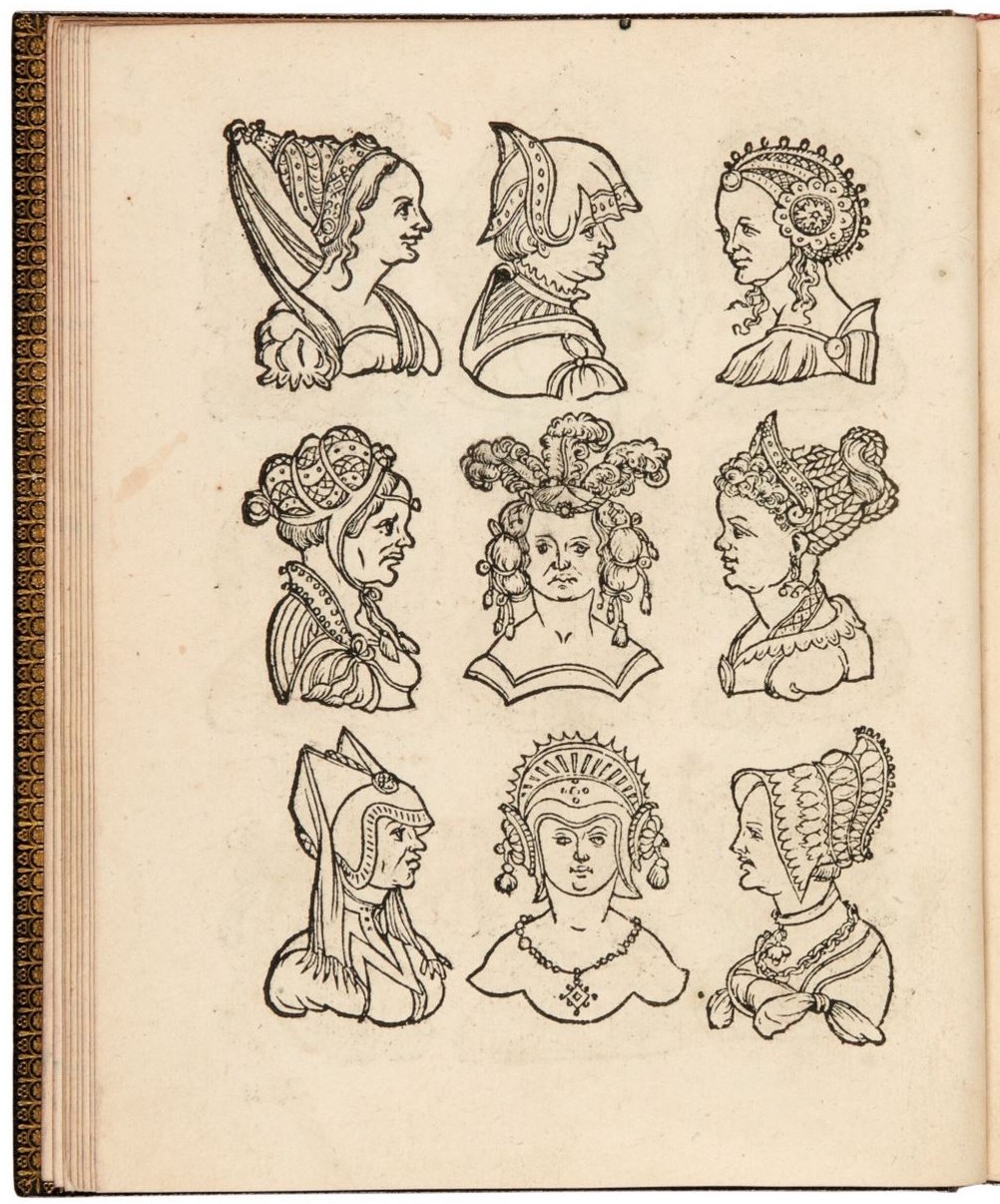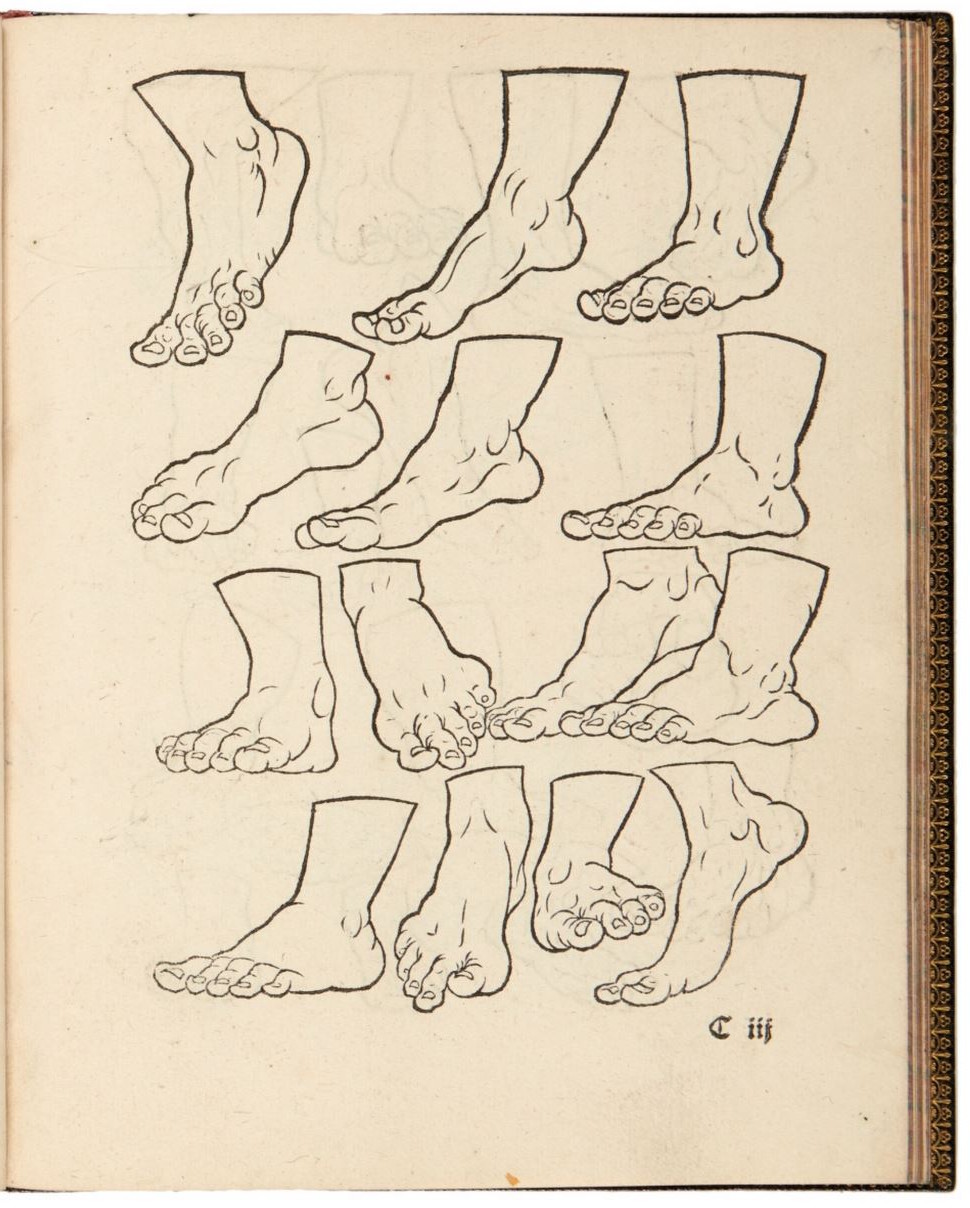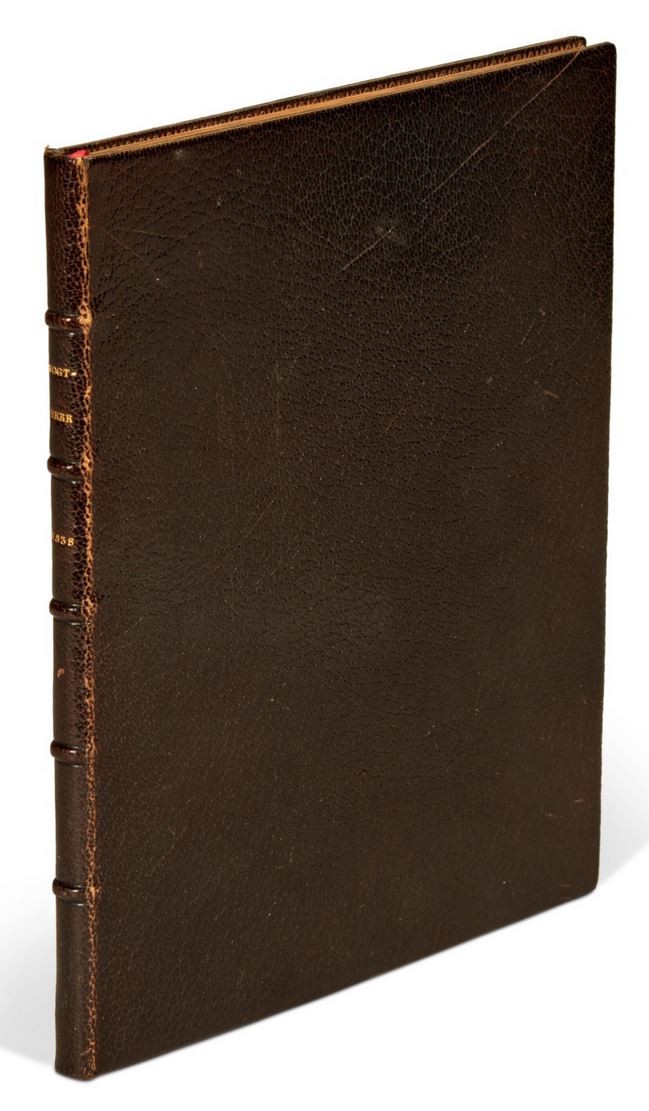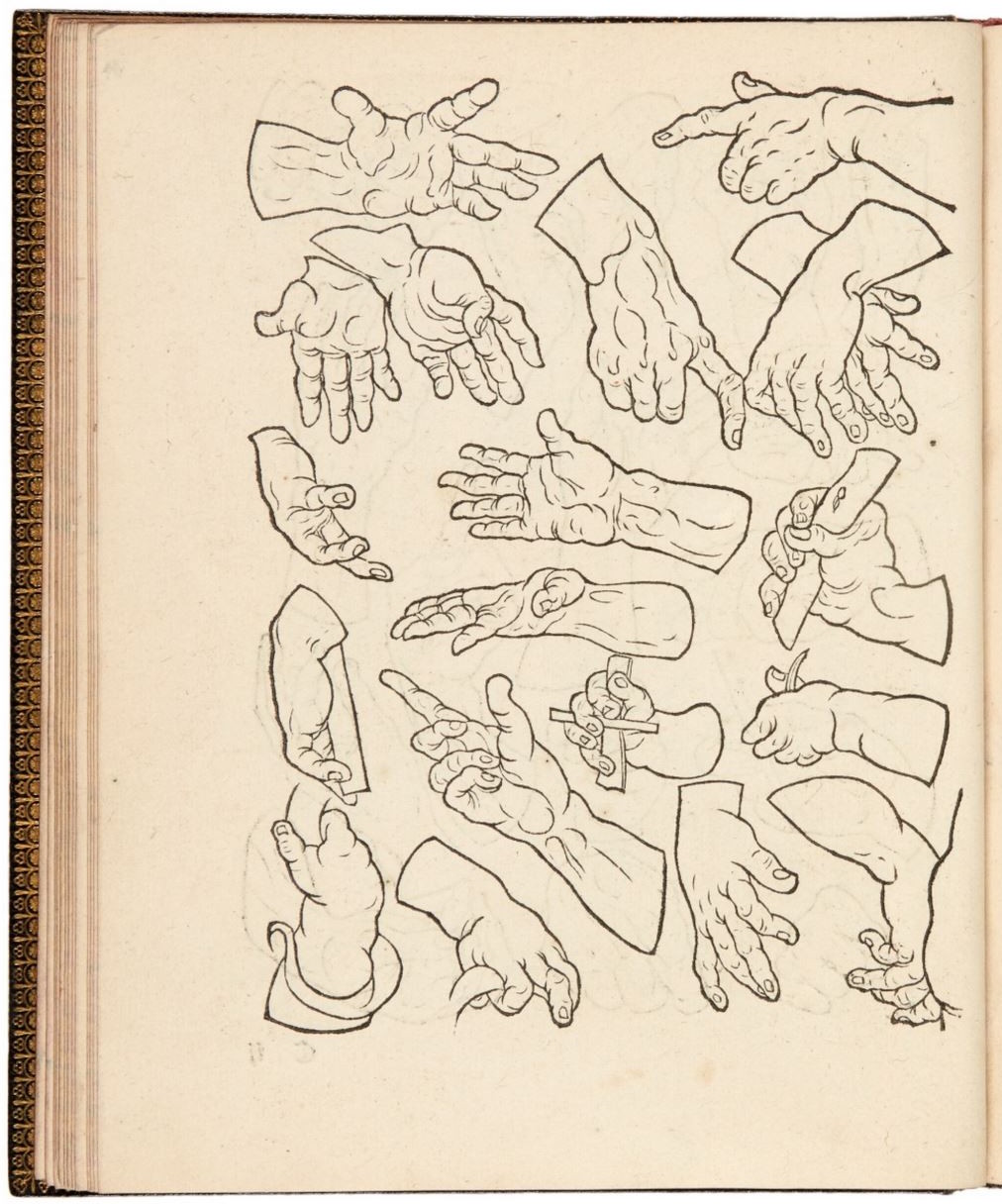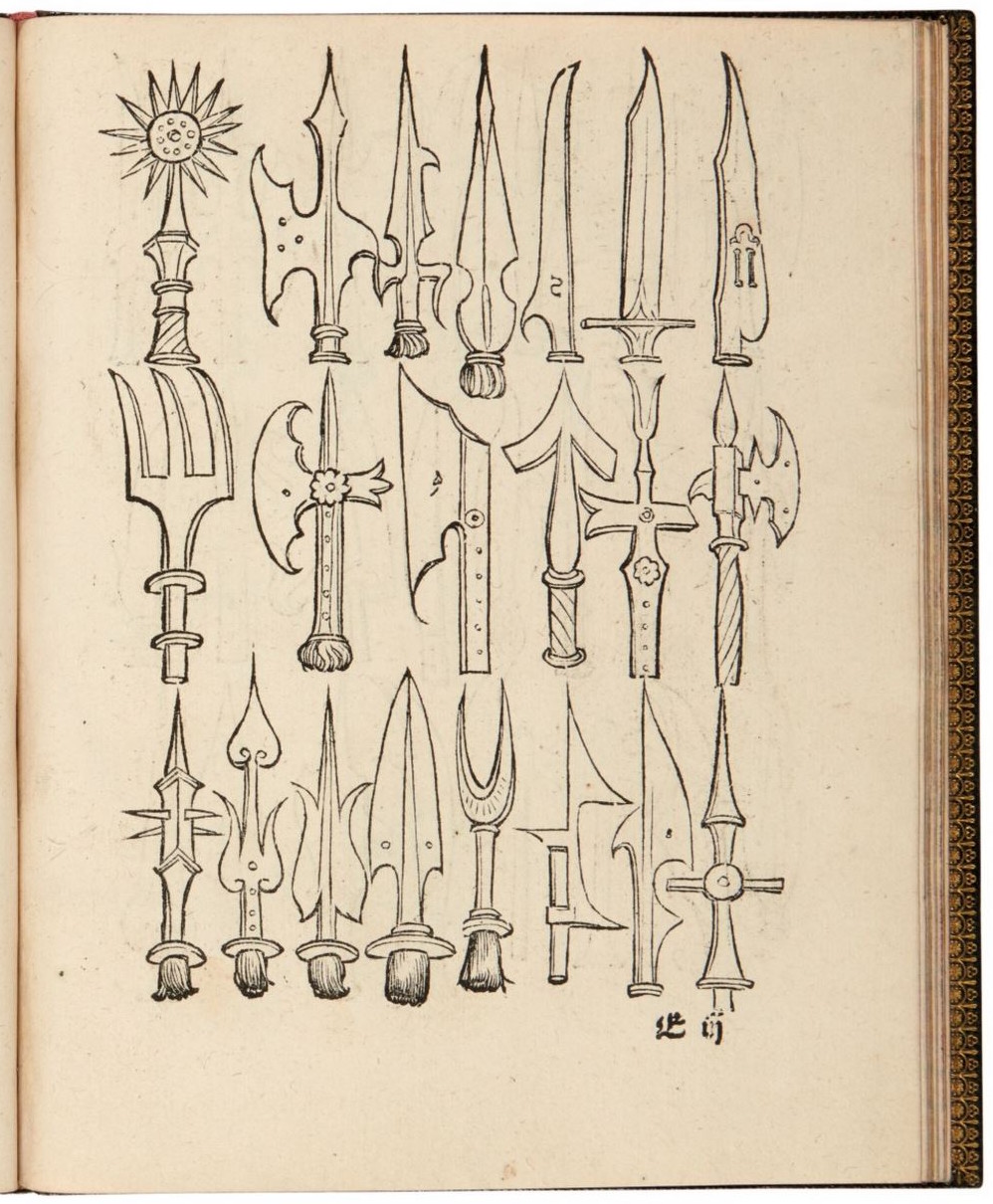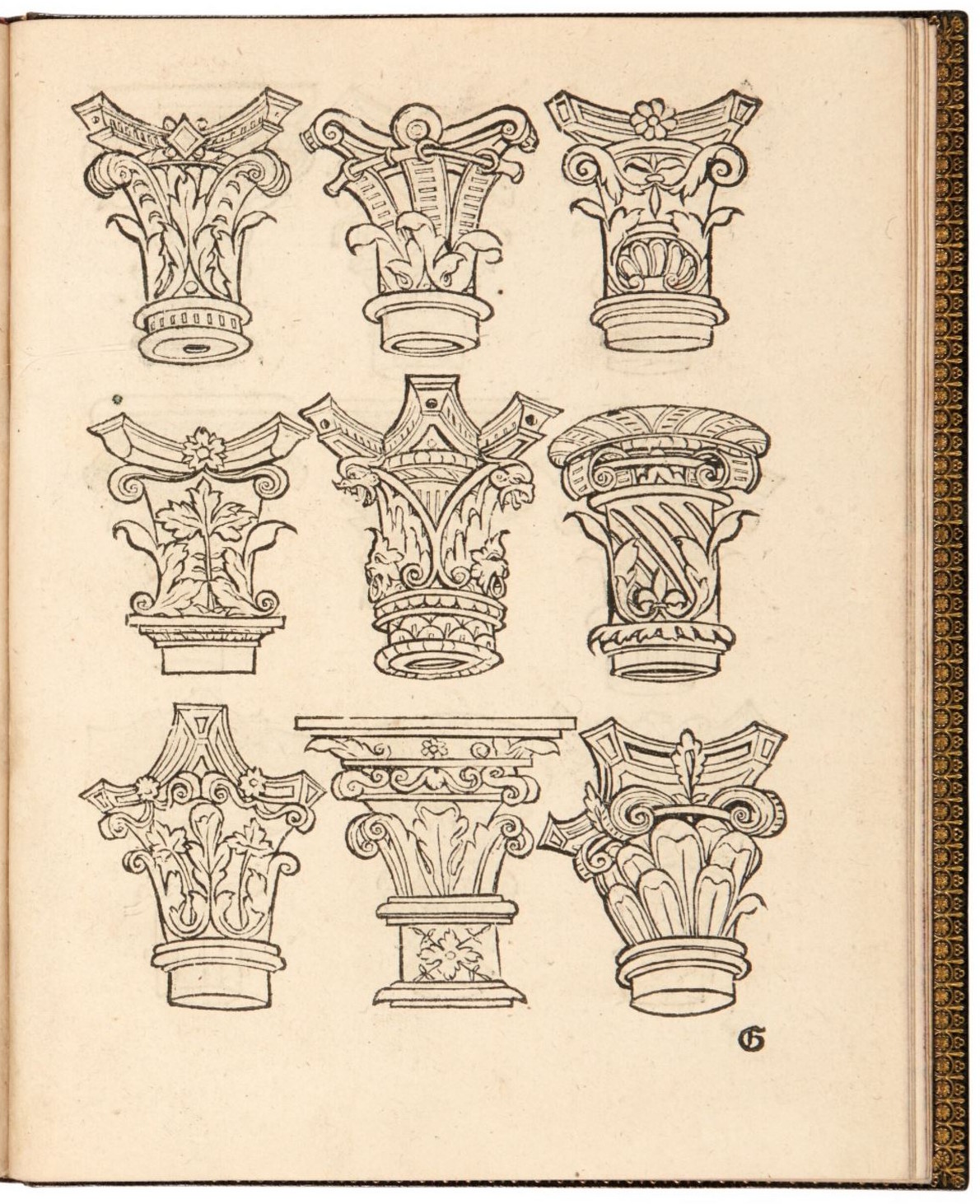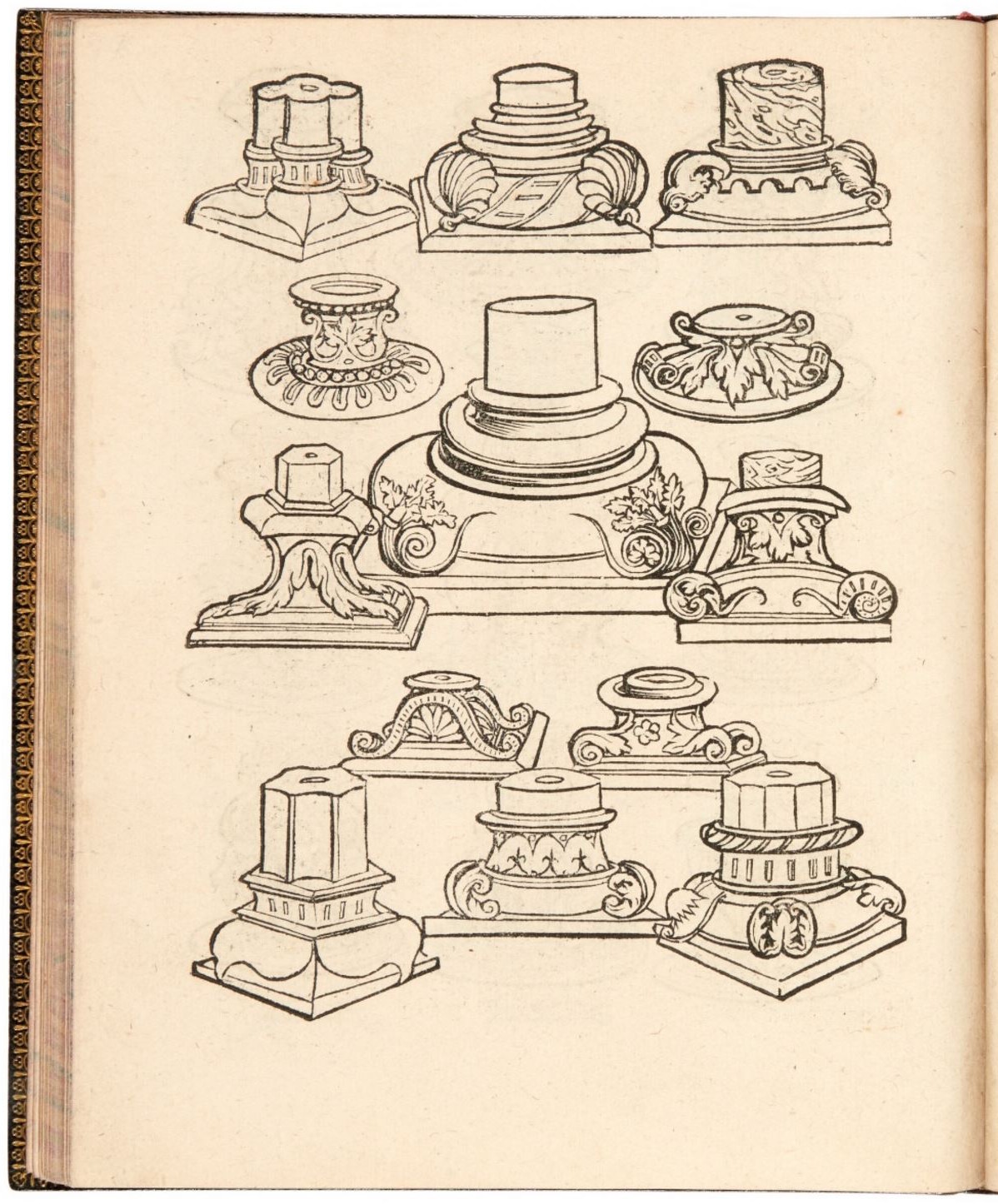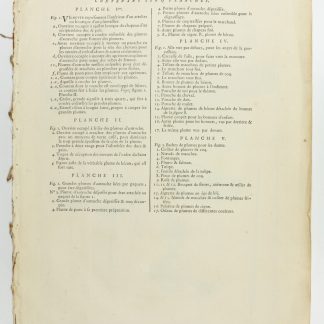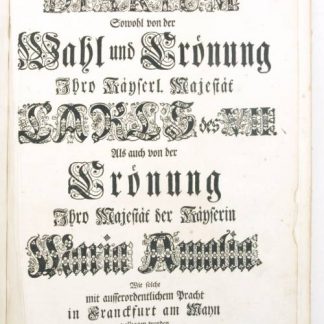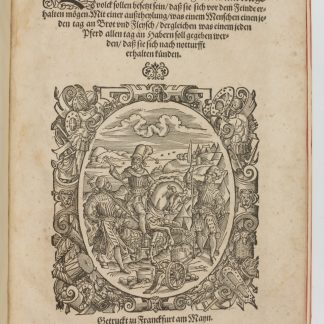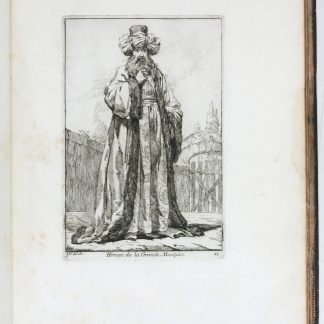The first model book of the German Renaissance, with distinguished provenance and magnificently bound
Ein Frembds und wunderbars Kunstbüchlin allen Molern, Bildschnitzern, Goldschmiden, Steinmetzen, Schreinern, Platnern, Waffen und Messerschmiden hochnutzlich zu gebrauchen.
4to (154 x 189 mm). Gothic type. 28 ff. (collation: A-G4). Woodcut white-on-black medallion portraits of Heinrich Vogtherr the Younger and Elder, dated 1537, on title-page, 2-page preface with woodcut device, around 700 woodcut illustrations over 51 pages. Bound by Cuzin in early 20th century crushed black/brown morocco with gilt dentelles; marbled endpapers. All edges gilt.
€ 85.000,00
First edition of the first model book for artists. Heinrich Vogtherr's popular model book comprises some 700 designs of headwear, hands and feet, armour, weaponry, and columns. The woodcuts of heads, hands and feet are shown in various different attitudes, and the male and female headgear includes contemporary and historical costumes, including some highly remarkable Ottoman-style portraits. Like the woodcuts of armour, weapons, shields, and column bases and capitals, they all are "distinguished by beauty and originality, especially in regard to the female heads which show a great variety in the styles and dressing" (Fairmax Murray). Vogtherr also displays an interest in physiognomy.
Heinrich Vogtherr the Elder (1490-1556) was a German printer, writer, religious radical and prolific creator of woodcuts; he may have trained with Hans Burgkmair I. He produced this work, alongside his son Heinrich Vogtherr the Younger (whose portrait is shown, next to that of his father, on the title-page), with the intention that it would be of use to artists, painters, goldsmiths, embroiderers and other craftsmen, presenting them for their assistance with difficult pieces to draw. In his preface, Vogtherr expresses that this work was produced in response to concerns about the state of the "refined and liberal arts" and the availability of artistic patronage following the Reformation, coupled with a desire for the German Nation to be considered as producing art and artists of the highest level.
This highly successful work resulted in seven more editions by 1572, including Dutch, French, Spanish and Latin versions; a facsimile edition appeared as late as 1913. Rare; USTC records just three copies (Berlin, Dresden and Sélestat).
Provenance: Edmond Foulc (1828-1916), French businessman and collector, with his bookplate. His library was bought by Pierpont Morgan and then put up for sale, Hôtel Drouot, Paris, 3 June 1914 (lot 377). Philip Hofer (1898-1984, American librarian and collector), bookplate, and his notes on flyleaf stating that he acquired it from "Thomas" (Thomas-Scheler?) in Paris, 4 April 1938. [Ars Libri, sold in 1983 to] the engineer and collector Arthur Emmanuel Vershbow (1922-2021) and his wife Charlotte Vershbow (née Zimmermann, 1924-2000) with their bookplate. Their collectioin dispersed at Christie's, New York, 10 April 2013 (lot 344) and acquired by Thomas Kimball Brooker, U.S. oil industry executive (b. 1939).
Very occasional minor spotting; joints very slightly rubbed.
VD 16, V 2179. Fairfax Murray, German 428. Kat. der Ornamentstichslg. Berlin 14. Muller, Bibl. Strasbourgeoise III, 436, no. 9. Ritter IV, 3447. Not in Adams or BM-STC German.

